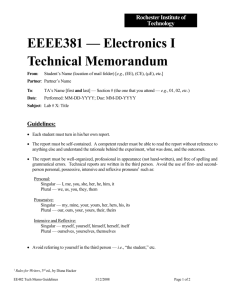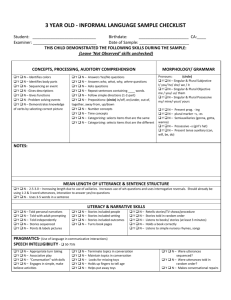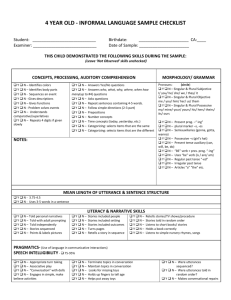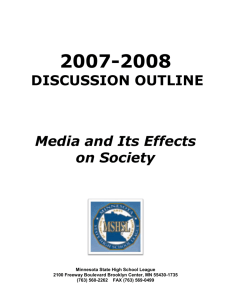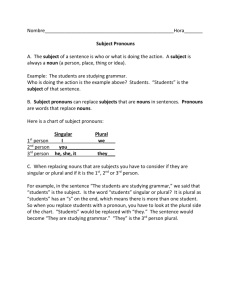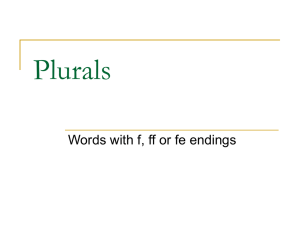Notes Question Words
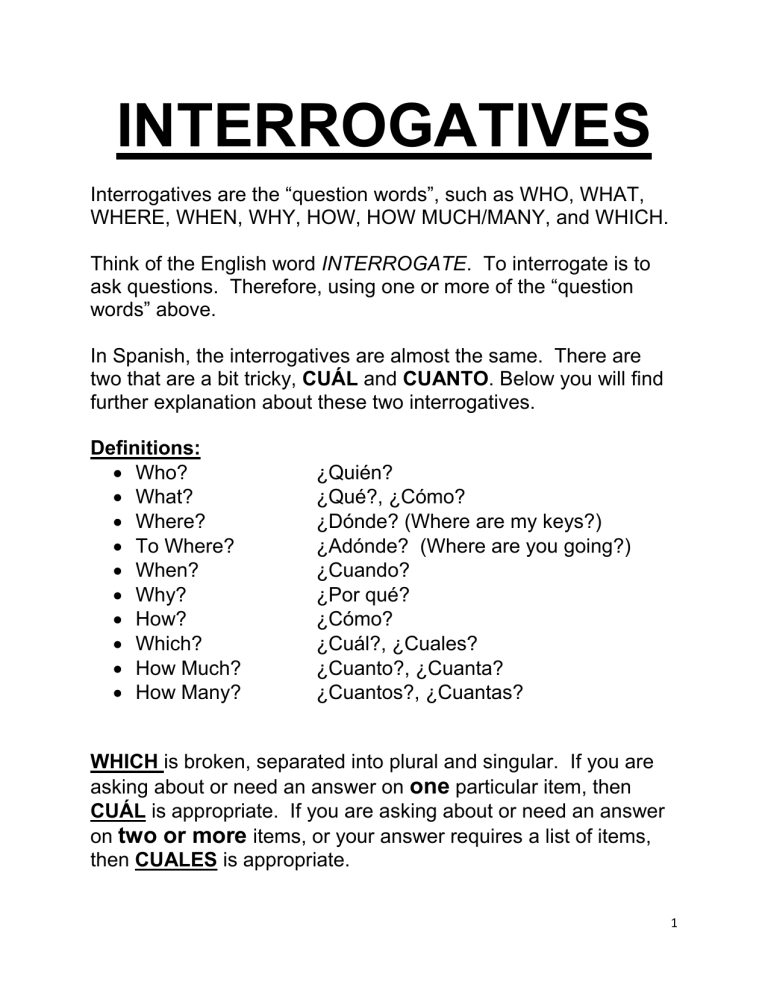
INTERROGATIVES
Interrogatives are the “question words”, such as WHO, WHAT,
WHERE, WHEN, WHY, HOW, HOW MUCH/MANY, and WHICH.
Think of the English word INTERROGATE . To interrogate is to ask questions. Therefore, using one or more of the “question words” above.
In Spanish, the interrogatives are almost the same. There are two that are a bit tricky, CUÁL and CUANTO . Below you will find further explanation about these two interrogatives.
Definitions:
Who?
What?
Where?
To Where?
When?
Why?
How?
Which?
How Much?
How Many?
¿Quién?
¿Qué?, ¿Cómo?
¿Dónde? (Where are my keys?)
¿Adónde? (Where are you going?)
¿Cuando?
¿Por qué?
¿Cómo?
¿Cuál?, ¿Cuales?
¿Cuanto?, ¿Cuanta?
¿Cuantos?, ¿Cuantas?
WHICH is broken, separated into plural and singular. If you are asking about or need an answer on
one
particular item, then
CUÁL
is appropriate. If you are asking about or need an answer on
two or more
items, or your answer requires a list of items, then CUALES is appropriate.
1
For example:
CUÁL/singular : ¿Cuál estudiante es más loco, Miguel o Pablo?
In this question, I am asking, “Which student is crazier, Miguel or
Pablo?” I am asking my question, looking for a singular response.
I only want ONE person as an answer.
CUALES/plural : ¿Cuales estudiantes son más locos?
In this question, I am asking, “Which students are the craziest?”
My question suggests that there are two or more crazy students and I want to know who they are, I’m looking for a list of names.
NOTE: If the subject is singular use CUÁL. If the subject is plural use CUALES.
HOW MUCH & HOW MANY are also separated by singular and plural, just like CUÁL & CUALES, but they are also separated by gender. You need to identify the subject and determine not only if it is singular or plural, but feminine or masculine. This interrogative is the most challenging, but once you know the subject you will be fine. Remember, nouns do not change genders, only descriptors (adjectives, adverbs, articles, etc.). The general rule is if a noun ends in an “a”, then it is likely feminine.
If the noun ends in “o”, then it is likely masculine. If you simply
DO NOT KNOW because it ends in neither, then go masculine.
For example:
CUANTO/CUANTA singular: ¿Cuanto quiere? In this question I am asking “How much do you want?” This is used in situations where it is not easy or common to give an exact number or measurement. A good example is water. When someone pours you a glass of water, the person might ask you, “How much?” It is
NOT common to answer in measure ment, such as “Please pour
2
me 7 ounces.” CUANTO/CUANTA are used when you want “a little or a lot” of something. For example, Suzy, how much ice cream do you want? I want a lot! In Español, “¿Suzy, cuanto quiere de helado? Yo quiero mucho.”
CUANTOS/CUANTAS plural:
¿Cuantos quiere?
OR
¿Cuantos hay? This is used in situations where a measurement or number can be provided in the answer. The first question is, “How many do you want?” The second question is, “How many are there?” In both cases a number can be given in the response. A good example is “¿Cuantos dulces quiere? How many candies do you want? OR ¿Cuantos estudiantes hay en la clase? How many students are in the class?” These examples are of plural masculine subjects, an example of plural femin ine would be….
“¿Cuantas chicas hay en las clase?, ¿Cuantas semanas hay en un año? How many girls are in the class?, How many weeks are in a year?.” CUANTOS/CUANTAS must change to modify the subject. In the “cuantos” questions, dulces and estudiantes are plural masculine. In the “cuantas” questions, chicas and semanas are plural feminine.
NOTE : Dulce and estudiante are masculine nouns and do not follow the “general rule” written above because neither ends in an
A or O.
3


